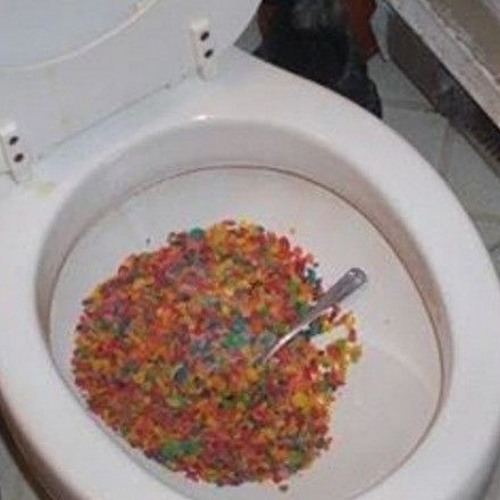Are You Capable to Dispose of Food Down the Toilet?
Are You Capable to Dispose of Food Down the Toilet?
Blog Article
How do you actually feel about Flushing Food Down the Toilet??

Introduction
Many individuals are often faced with the issue of what to do with food waste, especially when it involves leftovers or scraps. One usual question that arises is whether it's fine to purge food down the toilet. In this write-up, we'll delve into the reasons that individuals might consider purging food, the repercussions of doing so, and different approaches for proper disposal.
Reasons people may take into consideration purging food
Lack of understanding
Some people might not understand the potential injury caused by purging food down the bathroom. They may mistakenly think that it's a harmless practice.
Convenience
Flushing food down the bathroom may appear like a quick and simple service to dealing with undesirable scraps, specifically when there's no neighboring trash bin offered.
Idleness
Sometimes, people may just pick to flush food out of large negligence, without thinking about the effects of their activities.
Consequences of flushing food down the bathroom
Ecological influence
Food waste that winds up in waterways can contribute to contamination and damage water communities. In addition, the water made use of to purge food can stress water sources.
Pipes issues
Purging food can result in clogged pipelines and drains pipes, causing expensive pipes repair services and inconveniences.
Types of food that ought to not be purged
Fibrous foods
Foods with fibrous textures such as celery or corn husks can get entangled in pipes and create blockages.
Starchy foods
Starchy foods like pasta and rice can absorb water and swell, resulting in clogs in pipelines.
Oils and fats
Greasy foods like bacon or cooking oils should never be flushed down the commode as they can strengthen and cause obstructions.
Proper disposal methods for food waste
Using a garbage disposal
For homes geared up with garbage disposals, food scraps can be ground up and purged through the pipes system. Nevertheless, not all foods are suitable for disposal in this fashion.
Recycling
Certain food product packaging products can be reused, decreasing waste and decreasing environmental influence.
Composting
Composting is an environmentally friendly way to deal with food waste. Organic materials can be composted and used to improve soil for horticulture.
The significance of proper waste monitoring
Decreasing ecological damage
Correct waste administration practices, such as composting and recycling, assistance lessen contamination and preserve natural resources for future generations.
Shielding pipes systems
By staying clear of the practice of flushing food down the commode, property owners can protect against pricey plumbing repairs and preserve the honesty of their plumbing systems.
Conclusion
To conclude, while it may be appealing to flush food down the bathroom for benefit, it's important to comprehend the possible repercussions of this activity. By embracing appropriate waste administration methods and taking care of food waste sensibly, people can add to much healthier plumbing systems and a cleaner setting for all.
FLUSH FOOD DOWN THE TOILET?
FLUSHING FOOD CAN CAUSE BLOCKED DRAINS IN YOUR HOME
All of the plumbing fixtures in your home are connected to the same sewer pipe outside of your home. This outdoor sewer pipe is responsible for transporting all the wastewater from your home to the Council sewer mains. Even small pieces of food that go down the kitchen sink can cause problems for your sewer. It should therefore be obvious that flushing larger bits of food, such as meat, risks a clog in either the toilet itself or the sewer pipes. Flushing greasy food is even more problematic because oil coagulates when it cools, coating the interior lining of your pipes.
THE TOILET IS NOT A BIN
Food isn’t the only thing that people shouldn’t be flushing down the toilet. People use the toilet to dispose of all kinds of things such as tampons, makeup wipes, dental floss, kitty litter and even underwear. Water goes to great lengths to educate residents about the high costs and stress placed on wastewater treatment systems simply from people flushing the wrong stuff down the toilet. It costs taxpayers millions of dollars each year, and homeowners thousands in blocked drain repairs.
FLUSHING FOOD IS A WASTE OF WATER
Flushing food is a waste of our most precious resource - water. In June this year Level 1 water restrictions were introduced to protect water supply from drought conditions. Much of New South Wales continues to be affected by prolonged drought with recent figures revealing up to 97 per cent of the state remains in drought. Depending on whether you have a single or dual flush toilet, every single flush uses between five and 11 litres of water. In the current climate this is a huge amount of water to be wasting on flushing food that should be placed in the bin (or better yet, the compost).
https://www.jabplumbingsolutions.com.au/blog/can-you-flush-food-down-the-toilet

Hopefully you enjoyed reading our section on Flushing Food Down the Toilet?. Thanks a lot for spending some time to read our posting. I beg you set aside a second to promote this blog if you appreciated it. We recognize the value of reading our article about Think Twice Before Flushing Food Down Your Toilet.
Book My Estimate Report this page